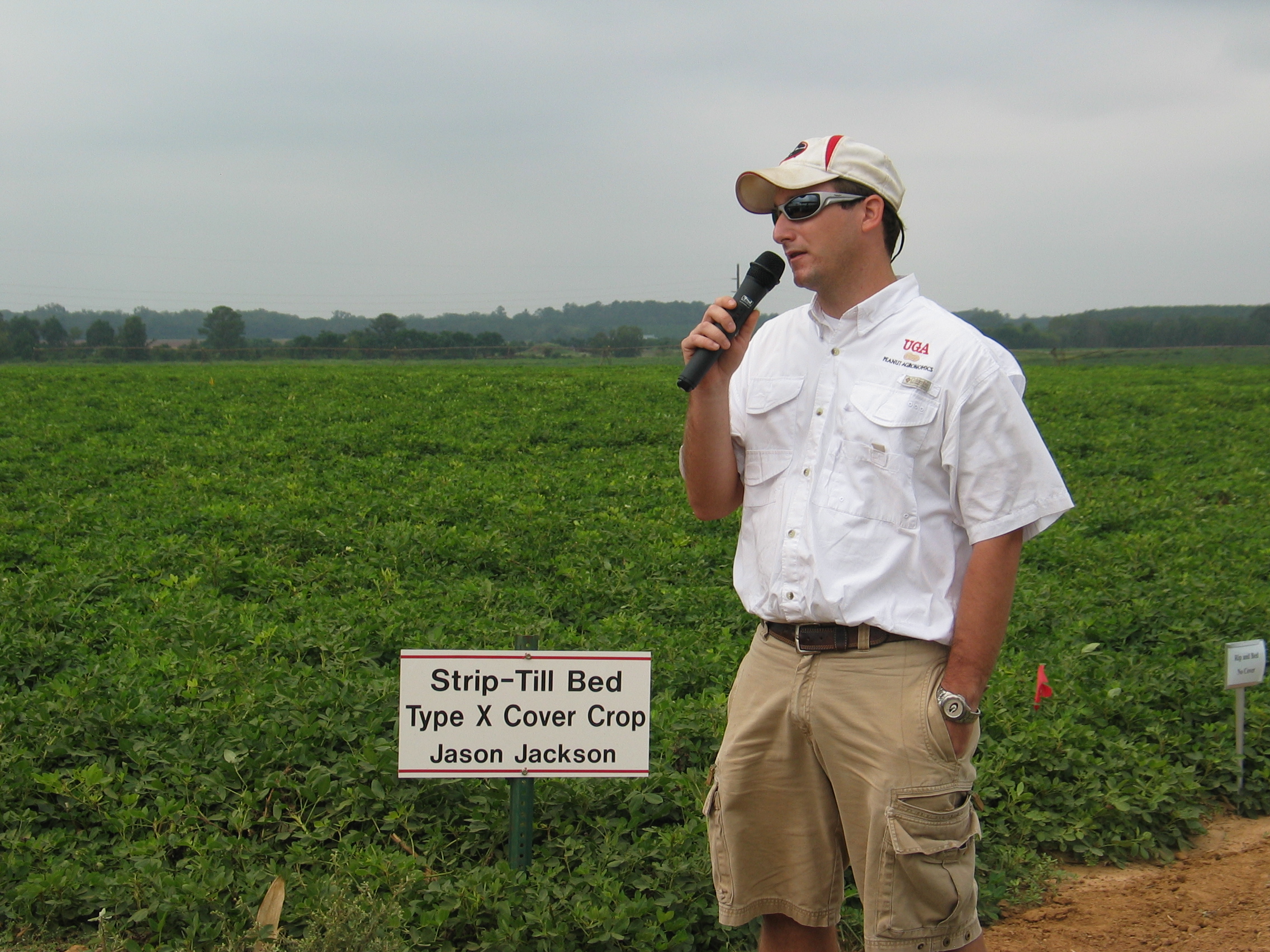 Jason Jackson, a University of Georgia student pursuing his master’s degree in agronomy, presented information on his research project during the stop at the Southwest Georgia Research and Education Center. Jackson grew up on a farm in Cuthbert, Ga., and knows first hand the digging losses that occur with strip-till peanuts in that area. This is unlike other areas of the state that have sandy soils. In fact research has shown an increase in yield by using strip-till versus conventional. However, the increase in projected yield does not help farmers in red clay soil areas that have suffered digging losses when using strip-till. Strip-till helps to conserve moisture and prevent erosion so Jackson came up with a new method utilizing strip-till that he hopes will also reduce digging losses for farmers in his area. In the research project, Jackson planted the variety Georgia 02C on a flat bed, raised bed (7″ high) and standard ripping bed (12 or 14″ high). The beds were made in the fall and a cover crop planted on the bed. In a 2007 test in Tifton, Ga., Jackson did not see any difference in results on digging loss or yield when comparing the flat and raised strip-till beds. However, there were differences in Plains, Ga. amounting to $150 per acre advantage. The 2007 research showed 1,200 pounds per acre digging loss on a flat bed and 600 pounds per acre digging loss on a ripping bed when using strip-till. The 600 pound difference in yield loss equals to a $150 per acre advantage when farmers use strip-till on a raised bed. The cost to prepare a bed is about $30 per acre. These results are from the first year of this study and the 2008 data should be available soon. Keep in mind that this research project has not been completed for three years so researchers on the University of Georgia Peanut Team are not recommending this as a practice yet for farmers.
Jason Jackson, a University of Georgia student pursuing his master’s degree in agronomy, presented information on his research project during the stop at the Southwest Georgia Research and Education Center. Jackson grew up on a farm in Cuthbert, Ga., and knows first hand the digging losses that occur with strip-till peanuts in that area. This is unlike other areas of the state that have sandy soils. In fact research has shown an increase in yield by using strip-till versus conventional. However, the increase in projected yield does not help farmers in red clay soil areas that have suffered digging losses when using strip-till. Strip-till helps to conserve moisture and prevent erosion so Jackson came up with a new method utilizing strip-till that he hopes will also reduce digging losses for farmers in his area. In the research project, Jackson planted the variety Georgia 02C on a flat bed, raised bed (7″ high) and standard ripping bed (12 or 14″ high). The beds were made in the fall and a cover crop planted on the bed. In a 2007 test in Tifton, Ga., Jackson did not see any difference in results on digging loss or yield when comparing the flat and raised strip-till beds. However, there were differences in Plains, Ga. amounting to $150 per acre advantage. The 2007 research showed 1,200 pounds per acre digging loss on a flat bed and 600 pounds per acre digging loss on a ripping bed when using strip-till. The 600 pound difference in yield loss equals to a $150 per acre advantage when farmers use strip-till on a raised bed. The cost to prepare a bed is about $30 per acre. These results are from the first year of this study and the 2008 data should be available soon. Keep in mind that this research project has not been completed for three years so researchers on the University of Georgia Peanut Team are not recommending this as a practice yet for farmers.
